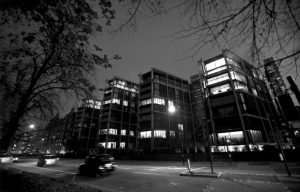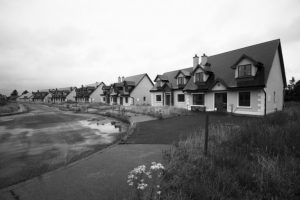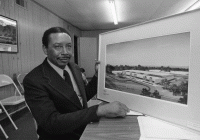In 21st-century finance capitalism, residential buildings are valued less as homes than as investment assets. The results are eerily underpopulated cities and bleak unfinished suburbs.
In the years since Occupy Wall Street emerged, it has begun to seem that the most meaningful aspect of the movement was the name itself — “Occupy.” It has become clear that the very notion of occupancy is a fulcrum of 21st-century finance capitalism. How else to understand the normalization of “owned but empty” units in so many residential buildings in cities around the world? As housing is increasingly treated as an investment asset, its basic function — the provision of shelter — is beginning to appear outmoded. Any sober assessment of global real estate trends cannot avoid the conclusion that vacancy is a preferred investment class. 1 Economist Michael Hudson’s 2010 declaration that the “‘postindustrial’ economy turns out to be mainly about real estate” might reasonably be updated to pronounce that today’s economy turns out to be mainly about unoccupied real estate. 2
21st-century urbanism abounds with newly created ruins that blur the distinction between success and failure, growth and decay.
One of the signal by-products of finance capitalism’s emphasis on asset value over use value is the underuse of architectural space. High residential vacancies in parts of cities that are perceived as desirable as well as abandoned or largely empty speculative developments are both prominent features of 21st-century urbanism. And as these two conditions suggest, not all under-occupancy is the same. A large proportion of owned but empty residential units generates an in-between state of uncertain vitality — zombie urbanism — whereas a more dramatic proportion of vacant or unfinished units produces a very different phenomenon — ghost urbanism. 3 This divergence — again, between buildings for use and buildings for investment — complicates some widely held assumptions; chiefly, that underuse is associated with blight and decay, while new growth signals vibrant prosperity. Indeed, 21st-century urbanism abounds with newly created ruins that blur the distinction between success and failure, growth and decay. And in the process, they recalibrate theoretical and emotional conceptions of architecture.

Zombie urbanism occurs when an area has large numbers of owned but empty housing units, resulting in a de facto density that is significantly below the designed capacity. These areas mix present populations with absent populations, exhibiting an eerily low level of vitality in relation to their scale. They are not dead, but they are also not quite alive.
To be sure, no urban area has full residential occupancy at any given time, because there is never a perfect alignment between housing supply and demand. In addition, there is a steady rate of turnover as people move in and out, buy and sell units, and spend time away from primary residences — all of which contribute to a certain number of empty units at any moment. What is considered an optimal level of vacancy depends on local conditions that change over time. According to the U.S. Census, the vacancy rate in rental housing in the entire United States fluctuated between 7.6 and 10.6 percent from 1995 to 2018. 4 Over the same period, the vacancy rate of homeowner housing moved between 1.5 and 2.6 percent. 5 What housing analysts call the “equilibrium vacancy rate” is that which poses no upward or downward pressure on housing costs. 6 Zombie urbanism happens when vacancy rates are significantly higher than these ranges.

Owned but empty units tend to serve three functions: as wealth storage, as speculative assets, and as secondary residences. These functions can operate discretely but more often work in combination. The purchase of a second home for recreational use, for instance, is often informed by speculation. While a typical investor will rent out a second home for ongoing revenue, a very wealthy investor might leave it empty. These individuals’ substantial capital propels them to diversify their wealth storage while also facilitating a lifestyle of global mobility, in which multiple residential properties are desirable. The growth of this wealthy cohort — so-called “very high net worth individuals” — is significantly affecting numerous places around the world.

Secondary homes tend to be either recreational — like the rural dachas outside Moscow — or urban — like the pieds-à-terre in central London. Such properties have been manifestations of wealth and privilege for centuries, but they began to proliferate during the Industrial Revolution, as both the upper class and the growing middle class sought relief from the dirt and clamor of the modern metropolis. By the early 20th century, large areas around London

— the so-called cocktail belt and stockbroker’s belt — contained country and weekend homes. 7 The French term pied- à-terre (foot to the ground) was coined in the 19th century to describe short-term or secondary lodging; now, of course, it denotes a second home in the city, typically an apartment.

